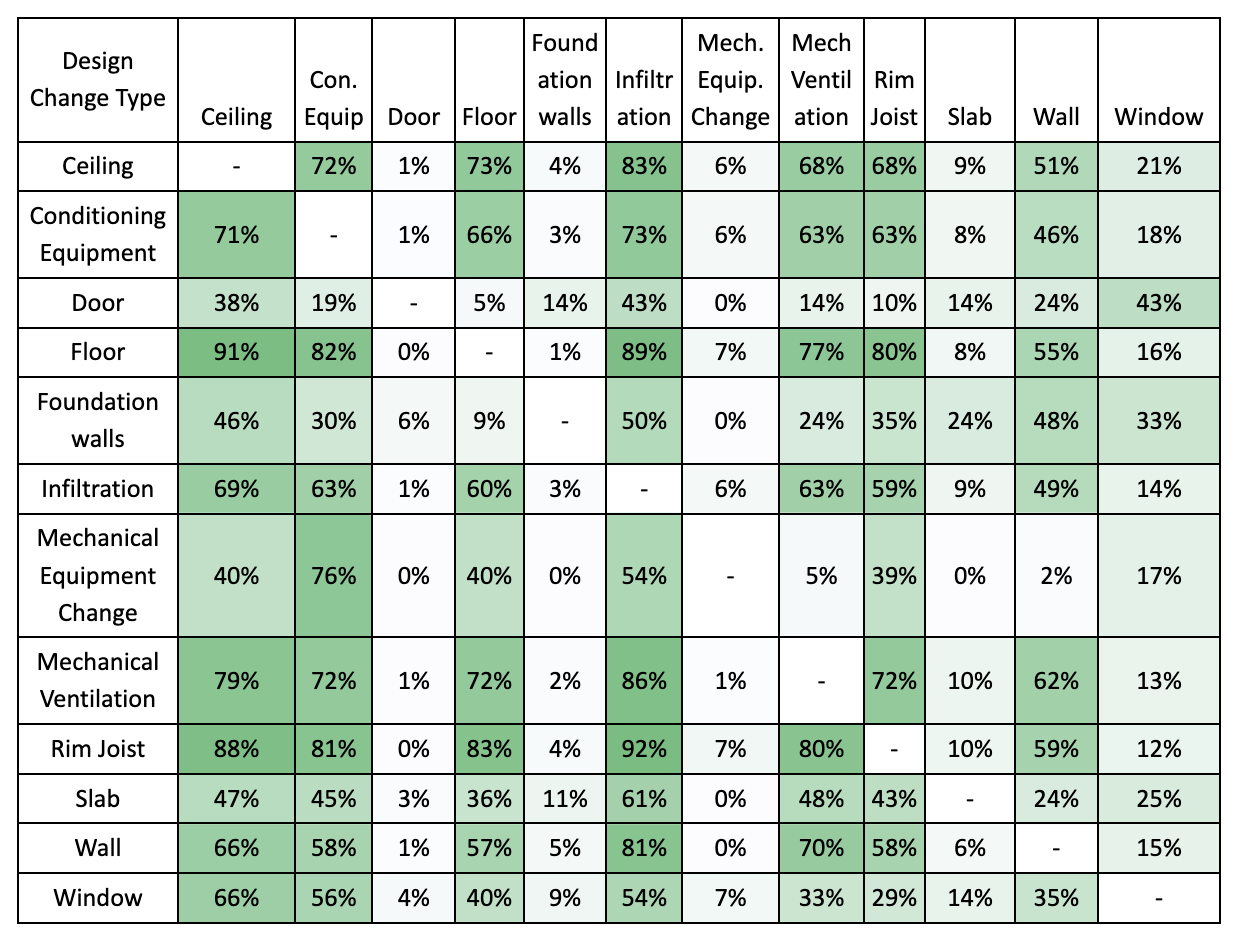Insights from 25,000 Scenario Modeling Combinations
Ekotrope released in-app Scenario Modeling to HERS Raters in July of 2022. Since then, there have been thousands of design changes analyzed over thousands of energy models to provide builders with answers to their time-sensitive design decisions.
The type of scenarios, design changes, and evaluation metrics that raters analyze for builders can tell us a lot about what builders are trying to achieve and what types of specifications they are willing to change.
This blog will review all 25,000 combinations analyzed using Scenario Modeling on 5,000 unique house plans since July 2022.
What is Scenario Modeling?
Scenario Modeling enables HERS Raters to answer their builder’s value engineering, spec changes, and product impact questions more comprehensively and faster than ever. Builders frequently ask ‘what-if’ type questions such as,“What happens to code compliance for my planned or active projects if I install this product?” Builders also need support during the design process to make specification decisions and purchasing plans to decide which products and specs to use. Finally, HERS Raters often provide support to guide builders toward better-performing homes that cost the same or less to build.
Before Scenario Modeling, a HERS Rater had to do all of this analysis by manually making 1 change at a time in 1 energy model at a time, running the analysis, and then compiling the results. Scenario Modeling combines all of those steps into 1 easy process that shrinks a multiple-hour analysis project to less than 20 minutes.
2022 Scenario Modeling Year in Review
Raters have analyzed over 5,000 unique house plans with Scenario Modeling since July 2022. Those 5,000 energy models, representing over 200 different builders, were located mainly in Texas, North Carolina, and Virginia. HERS Raters have provided this analysis to DR Horton, KB Homes, NVR, K Hovnanian, Lennar, Meritage, Mungo, and Pulte, amongst others.
These builders work across the country and with many different HERS Rating companies. They must find a building design that meets building requirements for each market in which they work. Reviewing the types of Scenario Modeling projects analyzed can tell us which codes and programs they are most interested in.
First and foremost, most builders are concerned with the impact of their HERS Score in Scenario Modeling What-if Analysis. After that, ENERGY STAR 3.1 is the second most requested Evaluation Metric. This is likely because of the enhanced focus on earning the 45L Tax Credit in 2023, the requirements of such rely on the criteria for ENERGY STAR v3.1. Third, builders are focusing on upcoming code changes and preparing to comply with IECC 2021.
What Products and Design Changes are they considering changing?
Scenario Modeling enables a quick evaluation of the impact of many different design changes and products to hone in on the best specification for a home and builder. Our users evaluated 25,193 different iterations of specification changes using Scenario Modeling in the second half of 2022.
The most common design changes included were updates to the Envelope Leakage Rate and changes to the Ceiling Insulation. Each of those changes were tested in 16% and 14% of all Scenarios, respectively. After that, Mechanical Equipment and Mechanical Ventilation were among the most commonly evaluated changes.
When a Mechanical System was evaluated these are the specifications tested:
Because most of the energy codes evaluated are above code or new energy codes, we can assume that the goal of these Scenarios is to increase the performance of the homes. Looking at the efficiency of these mechanical systems gives us an idea of the level of efficiency homes are ‘stretching’ to install. However, these are averages so some outliers can skew the results.
Often Mechanical Ventilation is added to homes to comply with new energy codes. ERVs are the most commonly evaluated Mechanical Ventilation system with Scenario Modeling. 40% of all Mechanical Ventilation design changes were ERV changes. The average Recovery Efficiency for those systems was 70%.
One of the benefits of Scenario Modeling is the ability to model multiple design changes together in a single scenario.
We can look at each scenario analyzed in our Scenario Modeling tool and see which types of design changes are evaluated together most commonly. This may indicate that two types of design changes are good trade-offs (for example, a rater or builder may trade up on one specification change and trade down on another to cut costs, or simply trade-up on both).
Below is a chart that shows how often two types of design changes are included in the same scenario. What we find out is that very often Conditioning Equipment or a Mechanical Equipment changes are completed with other Building Envelope changes. A more detailed analysis of the details of each design change may be more interesting and may be written about in a future blog. Please let us know in the comments below if that’s something you’d like to see!
We found this review of 2022’s Scenario Modeling analyses to be an enlightening exercise for our team. We hope you were able to gain some value from this as well. If you have any questions regarding Scenario Modeling please don’t hesitate to reach out to us at info@ekotrope.com to learn more.




